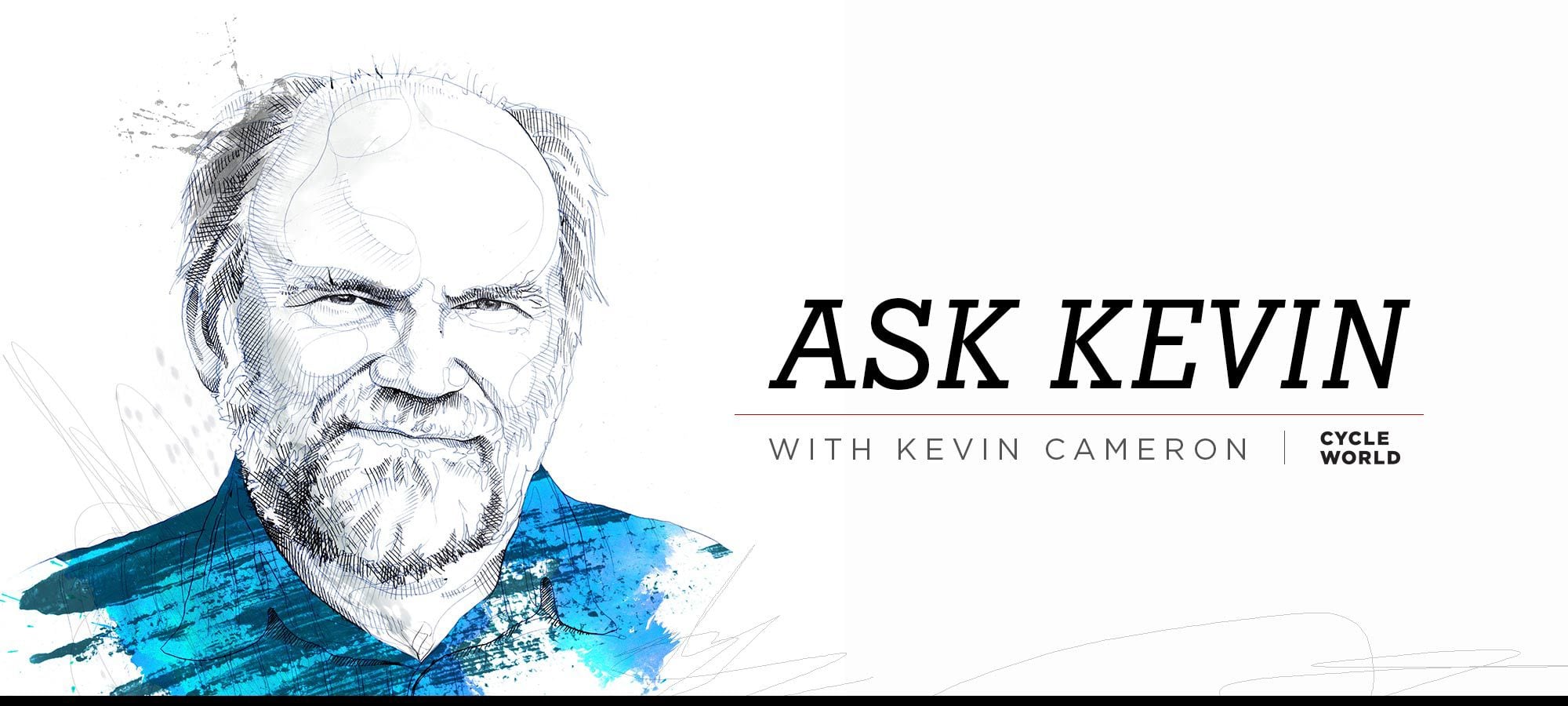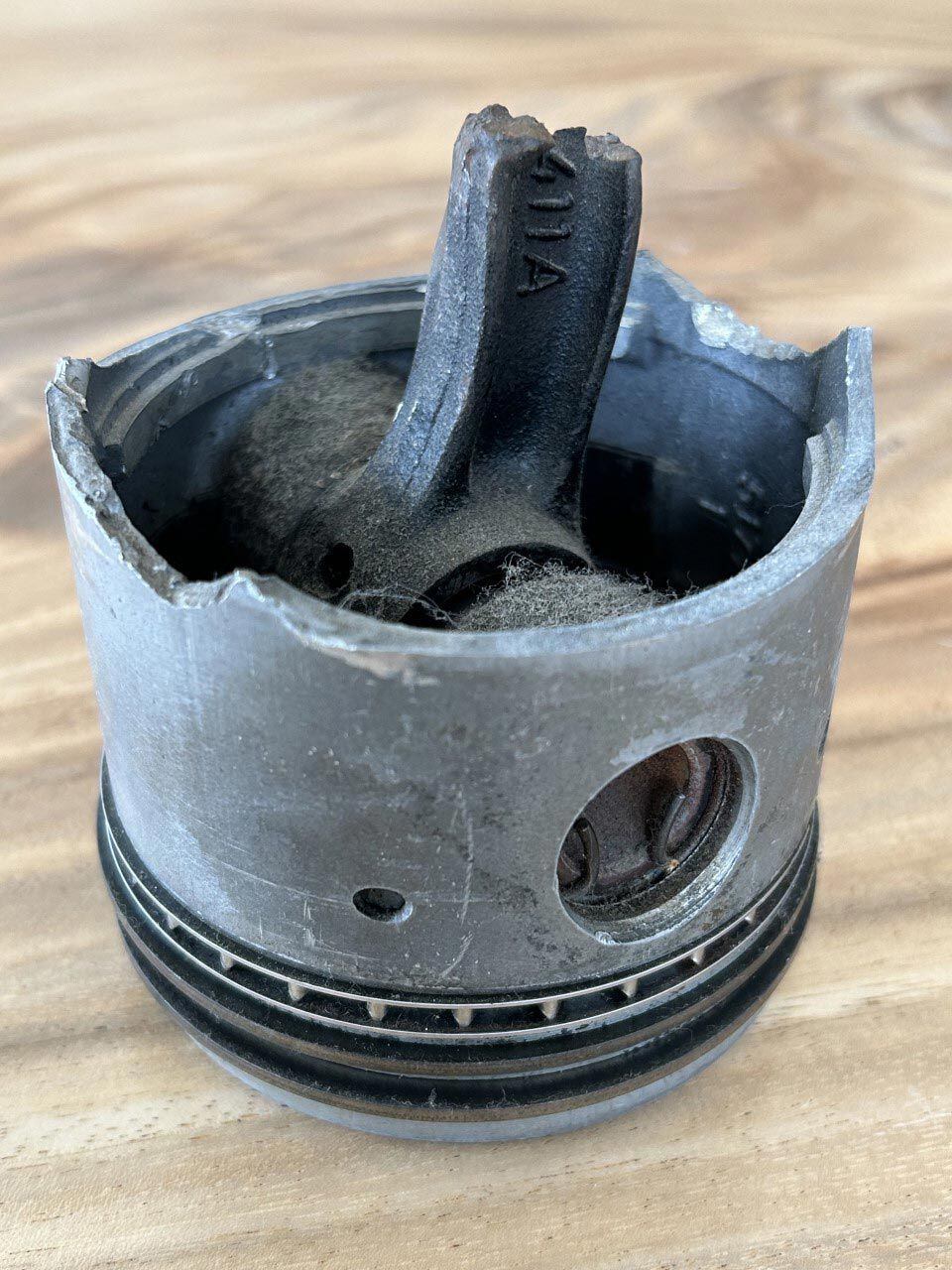
 |
|
|
#1 |
|
All the news that's fit to excerpt
Name: newsie
Location: who knows?
Join Date: Jun 2008 Motorcycle(s): only digital replicas Posts: Too much.
|
[cycleworld.com] - Keeping Con-Rod Big Ends Properly Lubricated
Bearings, bushings, and built-up cranks: Kevin Cameron explains how engine designers evolved their ideas to keep con-rods and cranks properly lubricated.
Click here to view on their site.  Kevin Cameron has been writing about motorcycles for nearly 50 years, first for Cycle magazine and, since 1992, for Cycle World. (Robert Martin/)In the early days of the motorcycle, railroads were the dominant transportation technology, and consequently many an early motorcycle builder had spent time in railroad shops. Accordingly, slow-turning early internal combustion (IC) engines looked a lot like steam engines. They used heavy iron castings, and their shafts turned on bronze bushings lubricated by screw-down grease cups or drip oilers. As design experience caused engines to turn faster and become smaller and lighter per horsepower produced, bearing loads and temperatures increased, making bronze bushings iffy. Pour half a cup of oil into the crankcase and hope crank rotation splashes it to where it’s needed. Attach a dipper to the con-rod’s big end and hope it splashes enough into that most critical of all engine bearings. (You can still see such “dippers” in some lawnmower engines today.) Cast little gutters into the inner walls of the crankcase, right above each of the two main bearings, and hope to catch oil trickling down the surface with a drilling leading to the bearing. Enter the Roller Bearing The safety bicycle was an emerging technology in 1895 (chain drive, both wheels of the same size), made possible by mass-produced rolling bearings. Friedrich Fischer’s new factory in Schweinfurt, Germany, (completed 1896) could make five million balls a week. Word got around quickly: Rolling bearings can survive on a lot less oil than can bronze bushings. The faster a shaft turns in a bushing, the hotter the oil in that bushing becomes, and the more it “turns to water” (loses viscosity with rising temperature). It may survive if that hot oil is constantly replaced with cool, but if not, it may seize. Bike engines lagged behind auto-engine development because the auto buyer of 1905 was a wealthy person, while someone on a bike was trying out the new IC prime mover in its cheapest, most accessible form. (When cars were selling for 2,500 British pounds, you could have a motorbike for 50.) That tended to keep motorcycle engines simple, and pumped, recirculating oil systems remained rare until the later 1920s. In the meantime, all kinds of half-measures prevailed. Racing cars carried a mechanicien whose constant duty was supervising drip oilers serving the various parts of the engine. Auto and racing pioneer Ettore Bugatti liked to place a collector ring at one end of each crankpin, so that some oil supplied to the adjacent main bearing would be flung into these collector rings and then reach the con-rod big-end bearings. A result of the half-measures was frank distrust of plain bearings, whose imperfect function placed rpm limits on most engines. World War I aircraft engines typically tuned 1,200 rpm, and racing car engines of 1913 about 2,000. All this is hard to imagine in 2022, when plain bearings have nearly completely displaced rolling bearings in crankshaft applications. But 100 years ago, a plain bearing’s soft “white metal” was still being applied in layers so thick they failed from outright fatigue, and the need for continuous filtered-and-cooled oil feed was not yet understood. In modern plain bearings the bearing material is very thin, and oiling systems have achieved high reliability. In the interwar period, therefore, racing-engines designers turned to rolling bearings—even adopting expensive multipiece crankshafts, machined to the most exacting standards, to make this possible. The Plain Bearing Perfected Norman Gilman at Allison Engineering in Indianapolis is credited with pioneering large-scale applications of a steel-backed split-shell three-layer bearing which made it possible for aircraft engines to reliably deliver very high power (patent date May 1929). During WWII its production was also licensed to Vandervell in England, where the bearings were used in the famous Rolls-Royce Merlin V-12 that powered the Hurricane and Spitfire fighter aircraft. Later in the war, German engineers studying captured Allied aero engines discovered such bearings, and Hitler’s “enabler,” Albert Speer, saw to it that German engines were converted to plain bearings as well, releasing a lot of rolling-bearing manufacturing capacity for other uses. Although the original development employed a thin layer of soft bearing metal, materials having higher fatigue strength—copper-lead, silver, and more recently aluminum—have been added to the menu. The “third layer” was a very thin break-in coating of soft material such as lead, protected against corrosion (“hen-tracking”) by indium. Despite the wide application of this new bearing type in automotive engines after WWII, designers were reluctant to try them in high-rpm racing engines. Mercedes and Porsche continued to equip their race engines with expensive (and short-lived) multipiece crankshafts turning on rolling bearings. Mr. Honda is said to have personally supported use of rolling bearings in his company’s roadracing engines of the 1960s. Gradually, progressive firms like Ferrari made their own performance and durability tests, discovering that rolling bearings did not, in fact, deliver lower friction torques. They found also that plain bearings, given an adequate oil supply, were extremely durable.  “Let he who is without oil cast out the first rod.” Book of Detonations, Chapter 1 (Mark Lindemann/)The built-up crankshafts of the rolling-bearing era were beautiful to behold. Some were assembled by means of precision-machined face splines, held in contact by drawbolts. Others, such as those built by Honda for operation to as high as 21,000 rpm for roadracing, were assembled by press fitting. Honda adopted automotive-type split-shell plain bearings for the crankshaft journals of the 1969 CB750 four-cylinder motorcycle engine, but other Japanese manufacturers continued using built-up crankshafts and rolling bearings into the 1970s. Today only a few specialized motorcycle engines (typically used in motocross) employ rolling main- or crankpin bearings. Sump and Oil-Feed Design Despite such improvements, during the 1970s and ‘80s many a souped-up four-stroke motorcycle engine was wrecked when oil in flat-bottomed wet-sump systems sloshed away from the oil pump’s pickup, allowing air instead of oil to be fed to crankshaft bearings. Today’s oil sumps are narrow and deep, keeping oil at the pump pickup much more reliably. Plain bearings did not automatically solve all problems. As related previously on this site, Honda’s 750cc RC30 V-4 Superbike race engines periodically showed dark streaking of con-rod bearing shells, suggesting inadequate oil supply. Increasing oil pressure had no useful effect. When the RC45 replaced the RC30, the dark streaking persisted, and again, higher oil pressure failed to eliminate it. In its last variant, the RC45?s oiling system changed. The original was of automotive type, which taps oil from the crank’s main bearings and runs it through drillings to the crankpins. The problem? With such a system, oil from the mains must be forced radially inward into the main journals against “centrifugal force” to get it to the crankpins. So Honda engineers instead pumped the oil into the center of the crankshaft end (as is done in F1 engines, and as was done in WWII-era aircraft piston engines) so that “centrifugal force” helps instead of hinders the oil on its way to the crankpins. Suddenly all they needed to assure streak-free con-rod bearing shells was 12 psi.
__________________________________________________
I'm a bot. I don't need no stinkin' signature... |
|
|

|
 |
 Similar Threads
Similar Threads
|
||||
| Thread | Thread Starter | Forum | Replies | Last Post |
| [cycleworld.com] - The Big Squeeze | Ninjette Newsbot | Motorcycling News | 0 | September 22nd, 2022 02:53 PM |
| [cycleworld.com] - Austrian MotoGP Report—And Big News | Ninjette Newsbot | Motorcycling News | 0 | August 23rd, 2022 04:00 PM |
| [roadracingworld.com] - Aprilia Recalling RS 660, Tuono 660 Models For Con Rod Proble | Ninjette Newsbot | Motorcycling News | 0 | July 21st, 2021 03:22 PM |
| [superbikeplanet.com] - Jerez MotoGP Test Day One: Lorenzo Fastest, Tire Wear Big Con | Ninjette Newsbot | Motorcycling News | 0 | March 23rd, 2013 11:40 AM |
| [roadracingworld.com] - DMG Ends Testing Ban Until January 1st; Teams Now Free To Con | Ninjette Newsbot | Motorcycling News | 0 | October 7th, 2009 05:20 PM |
|
|